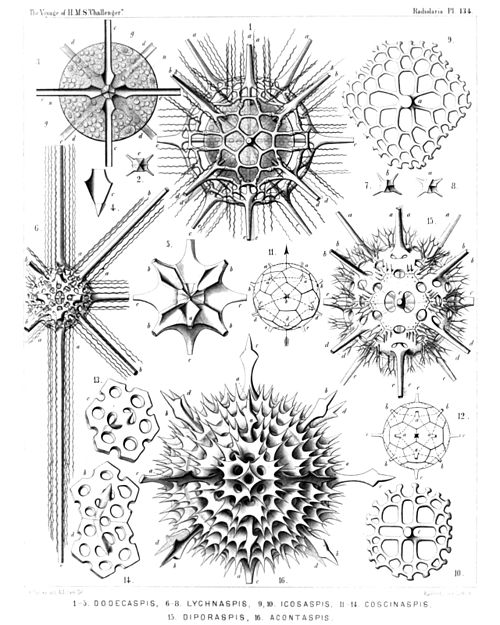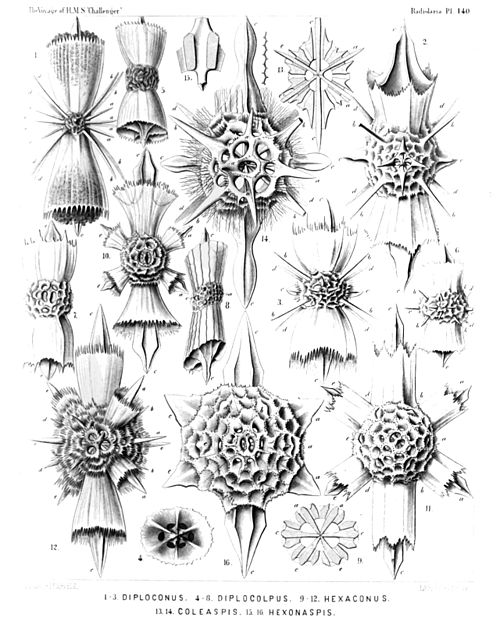Report on the Radiolaria/Plates14
PLATE 131.
Legion ACANTHARIA.
Order ACANTHONIDA.
Family Quadrilonchida.
|
||||||||||||||||||||||||||||||||||||||||||||||||||||||||||||||||||||||||||
PLATE 132.
Legion ACANTHARIA.
Orders ACTINELLIDA et ACANTHONIDA.
Families Astrolophida, Astrolonchida et Amphilonchida.
|
||||||||||||||||||||||||||||||||||||||||||||||||||||||||||||||||||||||||||||||||||||||||||
PLATE 133.
Legion ACANTHARIA.
Order SPHÆROPHRACTA.
Families Sphærocapsida, Dorataspida et Phractopeltida.
|
|||||||||||||||||||||||||||||||||||||||||||||||||||||||||||||||||||||||||||||||||||||||||||||
PLATE 134.
Legion ACANTHARIA.
Order SPHÆROPHRACTA.
Family Dorataspida.
|
|||||||||||||||||||||||||||||||||||||||||||||||||||||||||||||||||||||||||||||||||||||||||||||||||||||||
PLATE 135.
Legion ACANTHARIA.
Order SPHÆROPHRACTA.
Families Sphærocapsida et Dorataspida.
|
||||||||||||||||||||||||||||||||||||||||||||||||||||||||||||||||||||||||||||
PLATE 136.
Legion ACANTHARIA.
Orders SPHÆROPHRACTA et PRUNOPHRACTA.
Families Dorataspida et Belonaspida.
|
||||||||||||||||||||||||||||||||||||||||||||||||||||||||||||||||||||
PLATE 137.
Legion ACANTHARIA.
Order SPHÆROPHRACTA.
Family Dorataspida.
|
||||||||||||||||||||||||||||||||||||||||||||||||||||||||||||||||||||
PLATE 138.
Legion ACANTHARIA.
Order SPHÆROPHRACTA.
Family Dorataspida.
|
||||||||||||||||||||||||||||||||||||||||||||||||||||||||||||||||||||||||||||||
PLATE 139.
Legion ACANTHARIA.
Order PRUNOPHRACTA.
Families Belonaspida et Hexalspida.
|
||||||||||||||||||||||||||||||||||||||||||||||||||||||||||||||||||||
PLATE 140.
Legion ACANTHARIA.
Order PRUNOPHRACTA.
Families Belonaspida, Hexalaspida et Diploconida.
|
||||||||||||||||||||||||||||||||||||||||||||||||||||||||||||||||||||||||||||||||||||||||||||||||||









